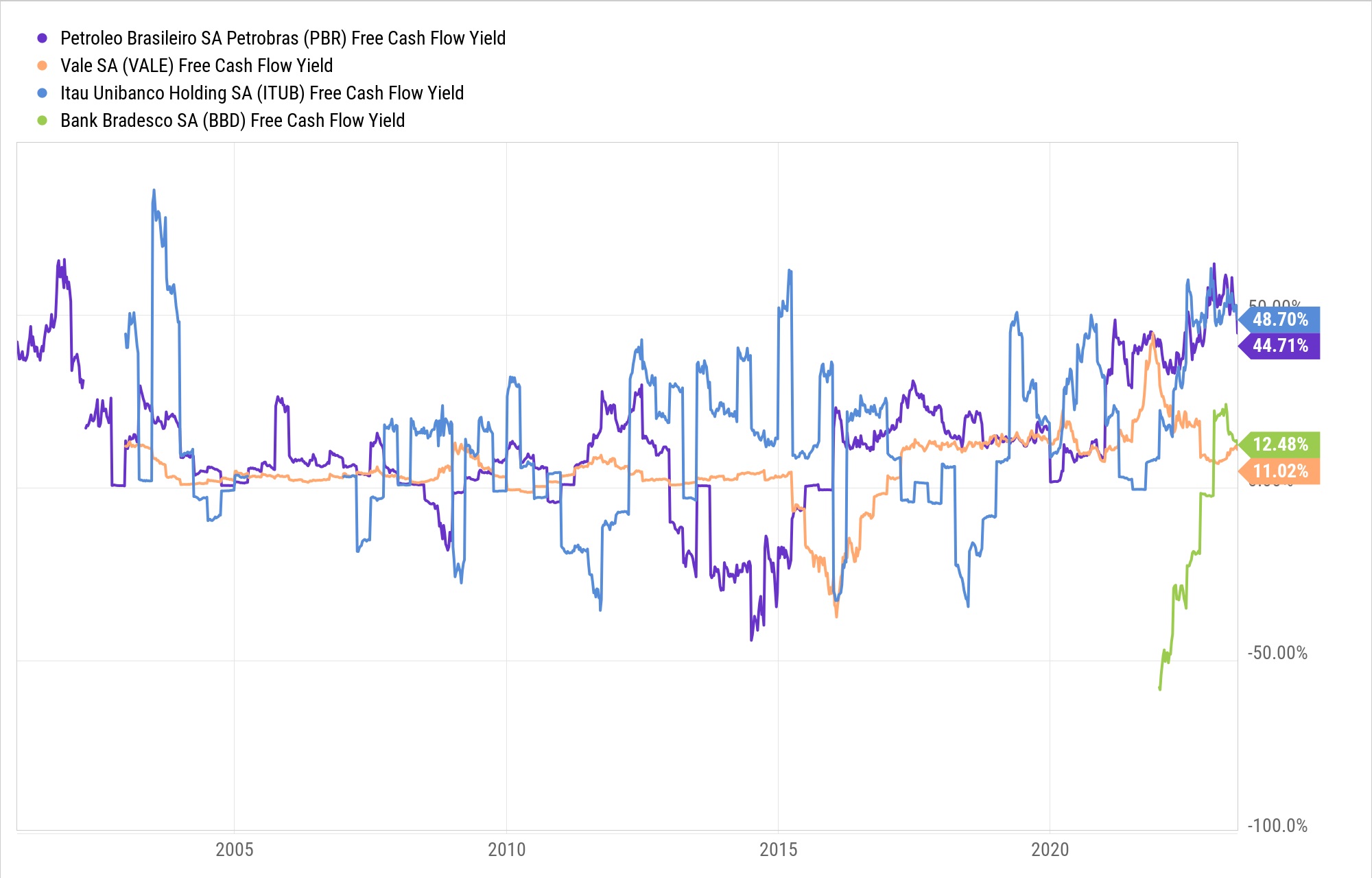

Finance
What Is A Tax Yield Investment?
Published: October 17, 2023
Learn about tax yield investments in finance and discover the benefits they offer for maximizing your returns. Enhance your financial strategy with this expert guide.
(Many of the links in this article redirect to a specific reviewed product. Your purchase of these products through affiliate links helps to generate commission for LiveWell, at no extra cost. Learn more)
Table of Contents
Introduction
When it comes to investing, there are many options available to individuals seeking to grow their wealth. One strategy that has gained popularity in recent years is tax yield investment. This investment approach not only aims to generate financial returns but also takes advantage of tax incentives to maximize earnings.
But what exactly is tax yield investment? In simple terms, it refers to investing in assets or financial instruments that provide tax benefits or incentives. These investments may include tax-exempt bonds, tax-advantaged retirement accounts, or even certain business ventures with tax advantages.
The concept of tax yield investing revolves around the belief that minimizing or eliminating taxes on investment income can greatly enhance overall returns. By strategically selecting investments with favorable tax treatment, individuals can effectively reduce their tax liability and keep more of their earnings.
It’s important to note that tax yield investments are not just for the wealthy or sophisticated investors. They can be accessible to anyone who wants to make the most of their money and take advantage of tax advantages offered by the government.
In this article, we will delve deeper into tax yield investments, exploring their various benefits, types, risks, and strategies. Whether you are a seasoned investor looking for new opportunities or a novice investor seeking to optimize your financial returns, understanding tax yield investments can be a valuable tool in your investment arsenal.
Definition of Tax Yield Investment
Tax yield investment, also known as tax-advantaged investing, is a strategy that focuses on investing in assets or financial instruments that offer tax benefits or incentives. This approach aims to minimize the impact of taxes on investment income, ultimately maximizing overall returns for investors.
When individuals invest in tax yield investments, they take advantage of specific provisions or regulations set by the government to reduce or defer their tax liability. By strategically selecting investments with favorable tax treatment, investors can keep a larger portion of their earnings and potentially achieve higher after-tax returns.
There are various types of tax yield investments available, each with its own set of tax advantages. These investments may include tax-exempt municipal bonds, which provide interest income that is generally exempt from federal and sometimes state income taxes. Additionally, contributions to certain retirement accounts, such as a 401(k) or Individual Retirement Account (IRA), may offer tax deductions or tax-free growth on investment earnings until withdrawals are made.
Furthermore, investing in qualified small business stocks or real estate can also provide tax benefits. For example, through the Small Business Investment Research (SBIR) program, individuals can invest in start-up companies and potentially receive tax credits or deductions. Real estate investments, on the other hand, may offer depreciation deductions, allowing investors to offset taxable income.
Overall, the key idea behind tax yield investment is to leverage the tax advantages provided by the government to enhance investment returns. By minimizing tax burdens, investors can potentially achieve higher after-tax profits and accelerate wealth accumulation over time.
While tax yield investment can be a powerful strategy, it is important to consult with a financial advisor or tax professional before making any investment decisions. They can help assess your individual tax situation and provide guidance on the most appropriate tax yield investments to include in your portfolio.
Benefits of Tax Yield Investments
Tax yield investments offer several advantages that make them attractive to investors looking to optimize their financial returns while minimizing tax burdens. Some of the key benefits of tax yield investments include:
- Tax Efficiency: One of the primary benefits of tax yield investments is their ability to generate higher after-tax returns. By investing in assets or financial instruments with favorable tax treatment, investors can reduce or defer their tax liability, allowing them to keep more of their earnings. This can have a significant impact on long-term wealth accumulation.
- Income Generation: Many tax yield investments, such as tax-exempt bonds, provide a consistent stream of income in the form of interest payments or dividends. This can be particularly attractive for investors seeking regular income, such as retirees looking for reliable cash flow during their non-working years.
- Diversification: Tax yield investments offer diversification benefits by allowing investors to allocate their portfolios across different asset classes or sectors while still considering the tax advantages associated with each investment. This diversification can help reduce risk and potentially enhance overall portfolio performance.
- Long-Term Wealth Accumulation: By effectively managing taxes on investment income, tax yield investments can help investors accumulate wealth more quickly over the long term. The savings generated from reduced tax liabilities can be reinvested, compounding returns and accelerating the growth of the investment portfolio.
- Retirement Planning: Tax-advantaged retirement accounts, such as 401(k)s and IRAs, are popular tax yield investments. Contributions to these accounts often come with tax deductions, and investment earnings grow tax-free until withdrawals are made during retirement. This can be a powerful tool for individuals looking to save for their future and enjoy tax advantages along the way.
While these benefits make tax yield investments an attractive option, it’s important to consider individual financial goals, risk tolerance, and tax situation before investing. Consulting with a financial advisor or tax professional is highly recommended to ensure that tax yield investments align with your overall investment strategy and objectives.
Types of Tax Yield Investments
There are various types of tax yield investments available, each offering its own unique set of tax advantages and considerations. Here are some common types of tax yield investments:
- Tax-Exempt Municipal Bonds: Municipal bonds are issued by state and local governments to fund public projects. The interest earned from these bonds is generally exempt from federal income tax and may also be exempt from state and local taxes if the investor resides in the issuing state. This makes tax-exempt municipal bonds an attractive option for investors seeking tax-free income.
- Tax-Advantaged Retirement Accounts: Retirement accounts, such as 401(k)s, 403(b)s, and IRAs, offer tax advantages to individuals saving for retirement. Contributions made to these accounts may be tax-deductible, reducing the investor’s taxable income for the year. Additionally, investment earnings within the account grow tax-free until withdrawals are made during retirement.
- Real Estate Investments: Real estate investments can offer various tax benefits. For example, rental properties may allow investors to deduct expenses such as mortgage interest, property taxes, and maintenance costs. Real estate investments can also provide tax advantages through depreciation deductions, allowing investors to offset taxable income.
- Qualified Small Business Stocks (QSBS): Investing in certain qualified small business stocks can offer tax benefits. Under the Internal Revenue Code Section 1202, investors may be eligible for tax exclusions on capital gains if they hold the qualified stock for a specified period of time. This can provide a significant tax advantage for individuals investing in small businesses.
- Tax-Advantaged Education Savings Accounts: Education savings accounts, such as 529 plans and Coverdell Education Savings Accounts (ESAs), offer tax advantages for saving for higher education expenses. Contributions to these accounts may be eligible for state tax deductions, and investment earnings grow tax-free when used for qualified educational expenses.
It’s essential to carefully research and understand the specific tax rules and regulations associated with each type of tax yield investment. Additionally, consulting with a financial advisor or tax professional can provide valuable guidance in selecting the most appropriate tax yield investments based on individual circumstances and financial goals.
Risks and Considerations of Tax Yield Investments
While tax yield investments offer attractive tax advantages, it’s important to consider the risks and potential drawbacks associated with these types of investments. Here are some key risks and considerations to be aware of:
- Market and Economic Risks: Like any other investment, tax yield investments are subject to market and economic risks. The value of investments can fluctuate based on factors such as interest rates, inflation, and market conditions. It’s crucial to assess the potential risks and rewards of each investment carefully.
- Liquidity Risks: Some tax yield investments, such as certain types of bonds or real estate properties, may have lower liquidity compared to more traditional investments like stocks or mutual funds. This means it may be more challenging to convert the investment into cash quickly. Investors should be prepared for potential limitations on accessing their funds in certain situations.
- Changes in Tax Laws: Tax laws and regulations can change over time, affecting the tax advantages associated with certain investments. Policy changes at the federal, state, or local level could impact the tax treatment of specific investments. It’s important to stay informed about potential changes and their potential implications on the after-tax returns of tax yield investments.
- Individual Tax Considerations: The tax benefits of certain investments may vary based on an individual’s tax situation. Factors such as income level, filing status, and residency can impact the tax advantage received from different investments. Consulting with a tax professional can help identify the most appropriate tax yield investments based on individual circumstances.
- Complexity and Professional Advice: Tax yield investments can be more complex than traditional investments, requiring a thorough understanding of tax rules and regulations. It may be beneficial to seek the guidance of a financial advisor or tax professional who can help navigate the complexities and ensure that investments align with your overall financial goals.
It’s important to carefully evaluate these risks and considerations and determine whether tax yield investments align with your investment objectives, risk tolerance, and overall financial plan. Diversifying your portfolio and seeking professional advice can help mitigate potential risks and make informed investment decisions.
Tax Yield Investment Strategies
When it comes to implementing tax yield investment strategies, there are several approaches that investors can consider. These strategies aim to optimize tax advantages while achieving desired financial goals. Here are some common tax yield investment strategies:
- Asset Location: Asset location refers to strategically placing investments in different types of accounts to maximize tax advantages. For example, holding tax-efficient investments like index funds or tax-exempt bonds in taxable brokerage accounts and keeping tax-inefficient investments, such as actively managed funds, in tax-advantaged retirement accounts.
- Tax-Loss Harvesting: Tax-loss harvesting involves selling investments that have experienced a loss to offset capital gains and potentially reduce tax liability. By strategically balancing gains and losses, investors can minimize taxable income and optimize after-tax returns.
- Maximizing Contributions to Tax-Advantaged Retirement Accounts: Contributing the maximum amount allowed to tax-advantaged retirement accounts, such as 401(k)s and IRAs, can provide immediate tax benefits. These contributions may be tax-deductible, lowering taxable income in the current year and allowing for tax-free growth until retirement.
- Using Tax-Exempt Municipal Bonds: Investing in tax-exempt municipal bonds can be a tax-efficient strategy for generating income. These bonds offer interest income that is generally exempt from federal income tax and may be exempt from state and local taxes as well. Incorporating tax-exempt municipal bonds can help minimize tax liability while earning a steady stream of tax-free income.
- Consideration of Tax Efficiency in Investment Selection: When choosing investments, considering their tax efficiency is crucial. Tax-efficient investments incur fewer taxes, such as index funds or exchange-traded funds (ETFs) that have low turnover and generate minimal taxable events. This approach can help minimize the impact of taxes on investment returns.
- Strategic Charitable Giving: Charitable giving can be an effective tax planning strategy. Donating appreciated assets, such as stocks or mutual funds, can provide a tax deduction for the fair market value of the asset while avoiding capital gains taxes on the appreciation.
It’s important to note that the effectiveness of these strategies may vary based on individual circumstances and tax laws. Consulting with a financial advisor or tax professional can help determine which strategies are most appropriate for your specific situation and financial goals.
Conclusion
Tax yield investments can be a valuable tool for investors looking to optimize their financial returns while taking advantage of tax benefits and incentives. These investments offer various advantages, including tax efficiency, income generation, diversification, and long-term wealth accumulation.
Understanding the different types of tax yield investments, such as tax-exempt municipal bonds, tax-advantaged retirement accounts, real estate, and qualified small business stocks, allows investors to leverage the tax advantages provided by the government. By strategically selecting investments with favorable tax treatment, individuals can reduce their tax liability and potentially achieve higher after-tax returns.
However, it’s important to carefully consider the risks and considerations associated with tax yield investments. Market and economic risks, liquidity risks, changes in tax laws, and individual tax considerations should be taken into account before making investment decisions.
Implementing effective tax yield investment strategies, such as asset location, tax-loss harvesting, maximizing contributions to tax-advantaged retirement accounts, and considering tax-efficient investments, can further optimize the tax advantages associated with these investments.
Ultimately, tax yield investments should be considered in the larger context of an individual’s overall financial plan and investment goals. Consulting with a financial advisor or tax professional is highly recommended to ensure that tax yield investments align with individual circumstances and objectives.
Incorporating tax yield investments into your investment portfolio can provide not only financial benefits but also the peace of mind that comes from effectively managing your tax liability. By taking advantage of tax incentives, you can enhance your investment returns and work towards achieving your long-term financial goals.














